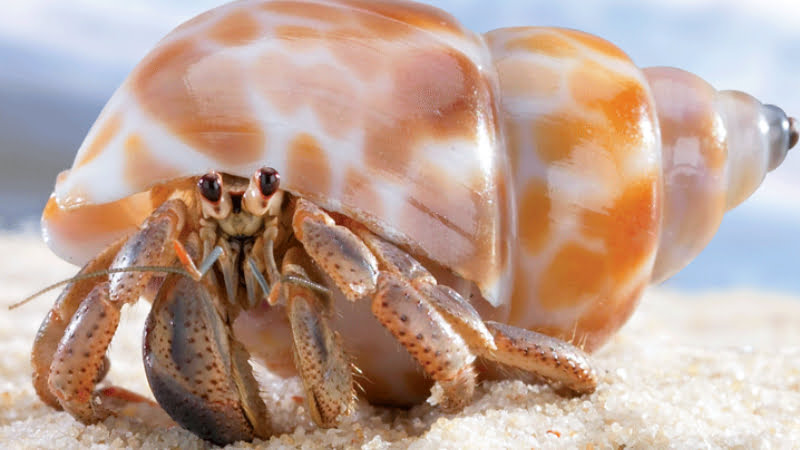“What’s wrong with hermit crab? Why is hermit crab not moving?” This question often pops up when people find hermit crabs that are either dead or aren’t moving. Is a hermit crab not moving the same as a hermit crab dying? No, hermit crabs can go into a state of estivation in order to survive in unfavorable conditions like dry spells and colder temperatures.
Let’s take a look at what causes this reflexive response and some other fun facts about hermits!
See also:
- How Often Do Emerald Crabs Molt? Are They Dead Or Molting?
- Electric Blue Hermit Crab Lifespan – Top 6 Interesting Secret
- How Big Do Emerald Crabs Get? How To Take Care Of Them?
About Hermit Crab Not Moving
In their natural habitat, hermit crabs are mostly nocturnal creatures. Therefore, they are most active at night and sleep during the day. It keeps them safe from the drying heat of the sun and predators. It is for this reason that sometimes you discover that they are inactive.
Temperature or humidity problems are another reason for inactivity. Your crabs will hideaway, not be as active if the temperature is below 72F or the humidity is below 70%. You must ensure that your hermit crabs live in a comfortable environment as a hostile environment will eventually kill them.
Can the habitat be boring? By using driftwood, coral, or rocks you can create an obstacle course within the tank to increase activity. Hermit crabs will be more likely to explore your tank if you provide them with an enriching environment. They love to climb and they’re curious species.
In addition, hermit crabs that spend a considerable amount of time in the water dish and are inactive for a long period of time may be preparing to molt. Every crab exhibits different symptoms before molting. Depending on the crab, some get slow and cranky, some are busy, some load up on food, others drink a lot of water.
Impending death could be the final cause. The problem could arise from poor habitat conditions, or a toxic diet (nearly all crab food sold to consumers is toxic).
Why Is Your Hermit Crab Not Moving?
Is it molting?
The hermit crabs will typically remain still when molting. It may even have come out of its shell halfway. Depending on its lifelessness, a pet can appear to be dead, which means owners can’t always tell whether or not their pet is alive. Nonetheless, very small movements, such as twitches, can be observed if you look closely.
If your crab is in the process of molting, you must be careful not to disturb it. In other words, it is better to leave it for now if you’re not sure. In case you have only one hermit crab, you can simply do nothing and let it run its course until you can be sure if it is molting or not.
In the event that you have more than one crab in your tank, you must take measures to protect each one. Placing some plastic around your crab will help with this. You can protect a crab molting from other crabs by cutting the ends off of a soda bottle (2 liters should be plenty) and placing this over it. Ensure there is adequate ventilation by removing the cap.
Because not all hermit crabs molt on the surface, it can be difficult to determine what is happening. There may be footprints in the sand, however, suggesting that your pet emerges from the house to get food at night.
However, if you haven’t seen your crab moving and you cannot locate any evidence of activity such as tracks in the sand, you could try gently moving the sand from around its hiding spot. If the animal has died in the sand, you are likely to notice a rotting odor when you move the sand away from it.
Typically, the molted exoskeleton of a crab can be seen on the sand shortly after it has molted. As this looks like a dead crab, many people assume their pet has died. It is however hollow, as you can see if you look closely. There’s a good chance that your crab has found a new shell to hide in, so look around.
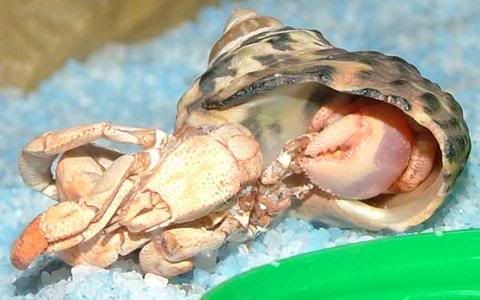
Could your hermit crab be sick?
Lifeless hermit crabs are not always caused by molting. In spite of the fact that these creatures tend to live long lives, they can sometimes fall ill, so it is a good idea to watch for signs of illness. Hermit crabs are typically hardy creatures that rarely get ill. They may have been infected with mites or have problems in their environment.
Movementlessness is usually a sign that one is molting, but also a sign that one’s under stress. Because it can be difficult to distinguish between the two, you must pay attention to your crab’s behavior if you notice any changes. It might dig into the sand more often if it is stressed or hide in its shell during the day. Bad odors coming from the tank are one of the major indicators of illness. Mold, mildew, or food that has rotted may cause your crab to become ill, and you may even smell them before you see them.
In any case, you should deal with any tank issues that are causing your crab to lose energy or become lethargy immediately. It will be necessary to remove the crab and completely clean out the enclosure. Add new sand and dechlorinated water after cleaning all furnishings and toys.
There are treatments available to treat your crab if you believe that he/she has a mite infestation. You should probably consult your veterinarian about treatment options and interventions.
Is it sleeping?
It is normal for your hermit crab to not move during the daytime because they are nocturnal creatures and come to life in the darkness. Provide your hermit crabs with food after sunset and you’ll likely see them take off.
A hermit crab usually sleeps burrowed under its substrate. However, this does not always apply. Like bats, some hermit crabs like to sleep upside down from the roofs of their tanks. This is also the position taken by hermit crabs at night.
It is caused by exhaustion during climbing. Hermit cars enjoy climbing. It is an instinct developed during their life in the wild. For hermit crabs, climbing is exhausting. Clambering to the top of the tank is fun, but it will likely leave them sleep-deprived afterward.
It is obvious that a dead hermit crab will be unable to hold onto an aquarium roof. There would be a huge drop to the ground. An impact, shock, and fall of such a magnitude may kill it even if they were alive beforehand. If you find any hermit crabs hanging on, just relax; they’re just dozing off.
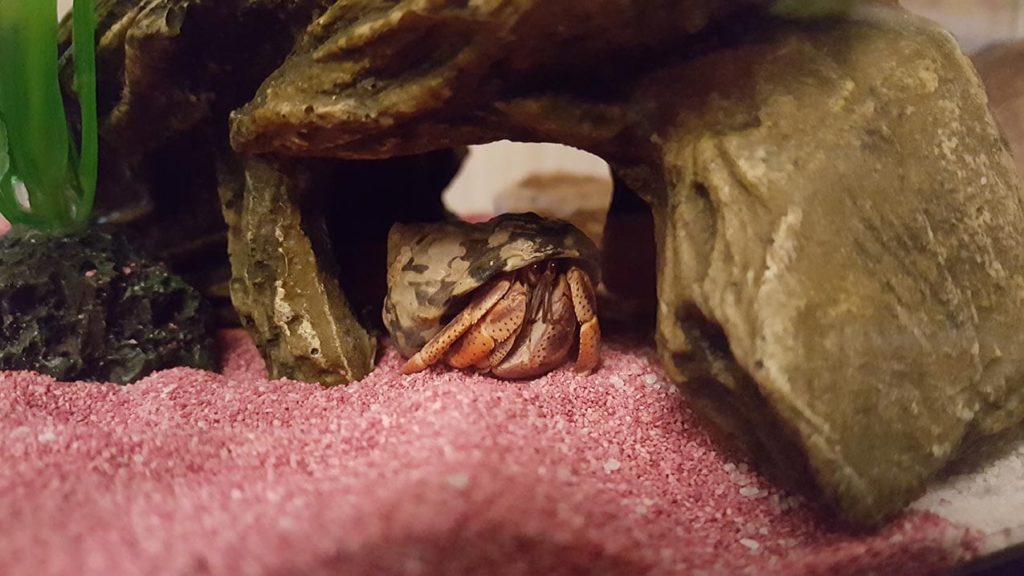
How To Tell If Your Hermit Crab Is Not Moving Because Of Dying
Foul smell
The smell of a dead hermit crab is the most recognizable sign of death. It smells like rotten fish when hermit crabs die. In the event that you smell this odor coming from a tank, investigate it immediately. This smell is the result of pheromones released by dying hermit crabs. An odor is released by dying hermit crabs to announce their demise.
It signals to other hermit crabs when a shell has become vacant. It is a known fact that hermit crabs prefer to live in shells that have previously been occupied by another hermit crab. There may be no intentional release of the pheromones. This action arises out of instinct, that is, to propagate the survival of this species.
Please be aware that hermit crabs are also capable of releasing this scent when molting. Molting is the complete shedding of the exoskeleton. Decomposition will then ensue, resulting in an unpleasant odor. This exoskeleton is eaten by molting hermit crabs in order to gain calcium, so don’t remove it.
Other hermit crabs gather
As mentioned above, a pheromone released by dead hermit crabs attracts conspecifics. Others will start lining up to test out the shell that’s now vacant. When all of your hermit crabs begin gathering around a prone comrade, chances are that crab is going to die.
However, there are some downsides to this behavior. This dead hermit crab may be consumed by hermit crabs since they are omnivorous scavengers. Hermit crabs have been reported to commit cannibalism, as described in the Journal of Experimental Marine Biology and Ecology.
In addition, hermit crabs do not always wait for their friends to die before eating. Hermit crabs that are injured are also eaten. The survivors will use this mechanism to defend themselves. In order to avoid attracting other predators, they avoid the smell of a weak and prone crab.
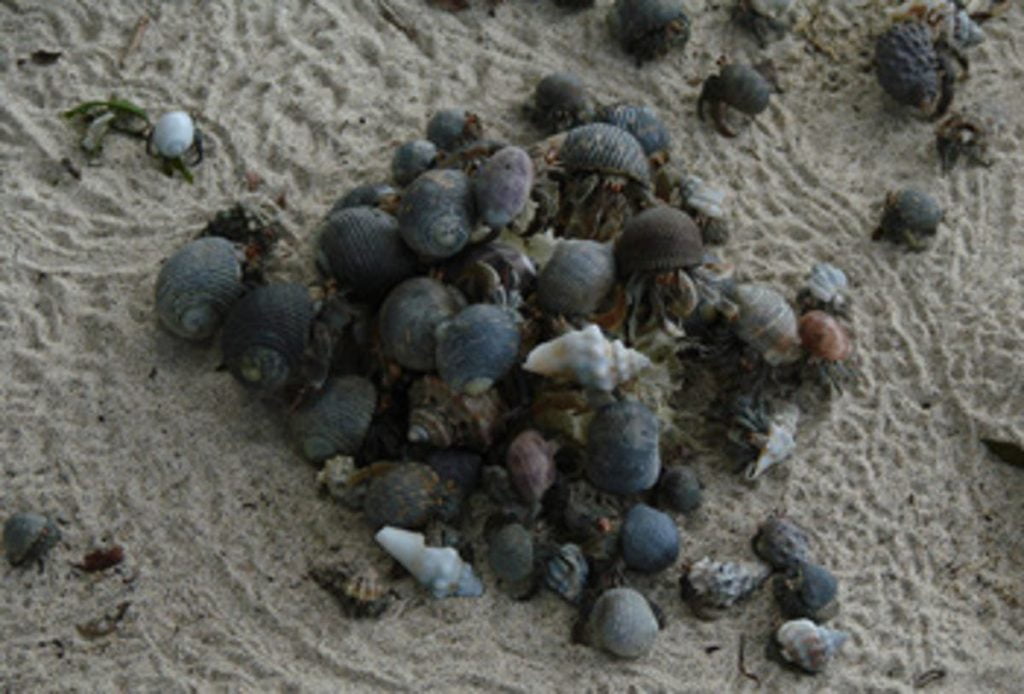
Multiple shed limbs
There are several reasons why hermit crabs shed their claws and limbs. Hermit crabs do not consider losing limbs fatal. Regrowth will occur. Moreover, when they are stressed or injured, they often shed their limbs. If you observe such behavior, determine why it occurred.
Hermit crabs can regenerate up to four lost limbs at a time, according to the Journal of Crustacean Biology. It normally happens just before or during a molt. However, the loss of several limbs at once is rarely a good sign in hermit crabs.
Shedding of limbs takes place gradually. In instances where more than one limb or claw is lost within 24 hours, it is more serious. See if there are any other signs that your hermit crab has died.
Shaking method
Shake the shell if you believe the hermit crab is dead. The proof will be beyond doubt for your theory. However, a molting hermit crab could be killed if it is still alive in its shell. It is therefore not recommended to use this method.
In general, live hermit crabs guard their shells jealously. Many hermit crabs prefer that they shed limbs than have their hard-earned shelter removed. As a result, hermit crabs will hold onto their hosts if shaken.
This ability is absent in dead hermit crabs. These hermit crabs’ bodies will be rigid and loose inside their shells. As such, it is theoretically able to fall out of the shell without resistance.
There is no failsafe here either. Hermit crabs may be ill, but they are fighting to live. Hermit crabs can be evicted from their shells if they are too weak to remain in them. Hermit crabs can die from the shock of this. You should let the crab crawl back into its shell if it starts to move.
Sometimes it is difficult to distinguish between a molting hermit crab and a dead hermit crab. Don’t do anything drastic unless you are completely certain a hermit crab is dead.
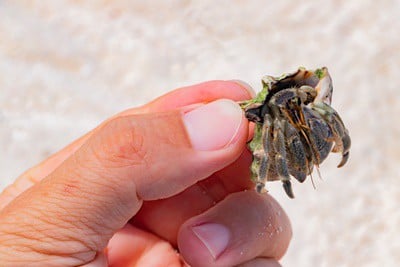
Video: Is Your Hermit Crab Molting? Dead? How To Know?
FAQs
Is it normal when a hermit crab is not moving?
It is normal for your hermit crab to not move during the daytime. Crabs are nocturnal creatures that only appear after dark. You can watch for your hermit crabs to come to life as soon as the sun sets.
Nevertheless, if you have had your hermit crabs for a while and you notice the crabs are not moving as much as they used to, you will probably wonder why. Usually, this seems to be a result of molting. A lot of people think that their crabs are dead when they are actually molting.
How to make a hermit crab become more active?
With a spray bottle filled with clean water, gently bathe or mist your hermit crabs. There’s a possibility they will become more active as they enjoy the water. Give them a tropical environment they are used to by providing a warm, moist environment with a relative humidity of 70%.
Why is a hermit crab alive but not moving?
In the event that your hermit crab doesn’t move much, the water in its habitat or even the paint on its shell could be killing it. … Your hermit crab needs to move regularly and not hang out of its shell because that can signify its death. It is also important to remember that hermit crabs lack movement when they molt.
Conclusion
The most common reason for a hermit crab appearing lifeless is that it is molting. Then, leave them alone. However, you should protect the molting crab by covering the one that is in the tank with plastic if you have more than one crab in the tank.
Lethargy in hermit crabs is sometimes caused by illness, so once you suspect this may be the case, you should identify the cause. Then, it is recommended that you consult your vet.
If you are raising hermit crabs and realize they are not moving, please pay attention to my blog post. I do hope that it will help your circumstances and wish your crabs be good.

Annette M. Chaney is an experienced marine biologist with over 20 years of experience as an aquarist and fishkeeper. She started her first aquarium at a young age, filling it with frogs and goldfish obtained from the ten-cent pet store.
Annette grew up caring for and breeding African Cichlids, which led to a hobby in high school that doubled as a profitable means. Attending Reed College gave her time to solidify herself as an accomplished aquarium caretaker with an eye for sales. After that, from 2009 – 2013, she studied at Roger Williams University – one of the most prestigious universities for Aquaculture and Aquarium in USA. She is the founder of AquariumCircle since 2010.
